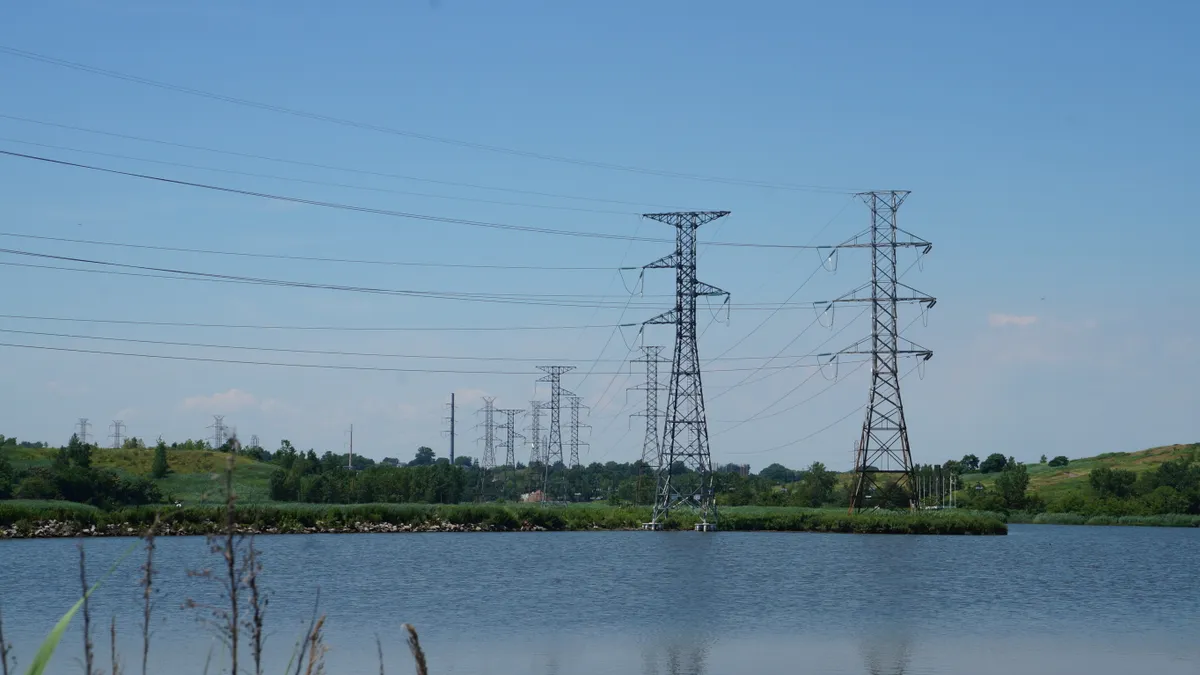UPDATE: Feb. 3, 2023: Western utilities will be able to participate in a day-ahead market under a proposal approved Feb. 1 by the California Independent System Operator’s board and the Western Energy Imbalance Market’s governing body.
WEIM entities that buy and sell energy in the real-time market will be able to participate in an extended day-ahead market, giving them access to additional economic, environmental and reliability benefits, the grid operator said.
The market is expected to begin next year, pending federal approval.
“The approval of the Extended Day-Ahead Market is an important milestone in the evolution of Western energy markets,” Vijay Satyal, deputy director of regional energy markets at Western Resource Advocates, said. “The EDAM will help the region address climate change by making it easier and less expensive to bring clean energy resources onto the grid in a reliable manner.”
Dive Brief:
- The California Independent System Operator last week issued a final proposal for day-ahead market enhancements, aimed at better accounting for net load variability and uncertainty.
- The changes outlined in the proposal will also be essential to the proposed extended day-ahead market that has been in the works in the region since 2021, and will help maximize the benefits of resource diversity across the Western footprint, according to the system operator.
- The proposal will be presented to the Joint Western Energy Imbalance Market governing body and the CAISO board of governors for a decision on Feb. 1.
Dive Insight:
The proposed day-ahead market enhancements are an attempt to ensure that there are adequate flexible reserves between the day-ahead and real-time markets, so that if electricity demand shifts, or there are changes to generation from intermittent resources like renewables, real-time energy needs can still be met, according to Seth Hilton, a partner at Stoel Rives.
Net load imbalances – essentially, the difference between day-ahead net load forecasts and actual real-time net load – have been increasing in recent years in part because of the influx of weather-dependent resources, CAISO noted in the proposal. CAISO’s day-ahead market does not currently have a system to procure flexible reserves to address potential shifts between day-ahead and real-time markets, which can lead to certain risks, according to the system operator.
“Specifically, grid operators manually increase the demand forecast used in the day-ahead market’s residual unit commitment process. The higher demand forecast leads to additional units committed and scheduled to address uncertainty between the day-ahead and real-time markets,” it noted in the proposal.
The grid operator is looking to address this by, among other things, introducing an “imbalance reserve product” that procures flexible reserves to account for the uncertainty between day-ahead and real-time markets – a system that it believes will create “a more efficient and effective market outcome.”
CAISO also views these enhancements as critical to the proposed framework for an extended day-ahead market, or EDAM, which would include participants of the Western Energy Imbalance Market outside the system operator’s balancing area. According to CAISO, “imbalance reserves would optimize the scheduling of flexible reserves across the EDAM footprint to meet each EDAM participants’ net load uncertainty and real-time ramping needs while maximizing the diversity benefit of a large market footprint.”
CAISO published the final voluntary EDAM proposal in December, and expects to launch the extended market in 2024. Also in December, PacifiCorp became the first entity to announce its intention to join the EDAM.
A study conducted by Energy Strategies for CAISO in November found that a day-ahead market in the West could produce to up to $1.2 billion in annual savings, and boost renewable output by more than 1,800 GWh. However, the advantages that the EDAM could provide over the long-term depends on whether CAISO can get participants to sign up for the proposal, according to Hilton.
“I think the real impacts of … the EDAM are going to be seen when we have the proposal adopted, and we see who actually joins up,” he said.















